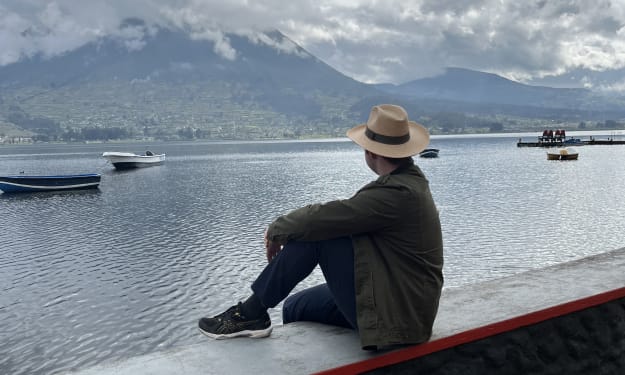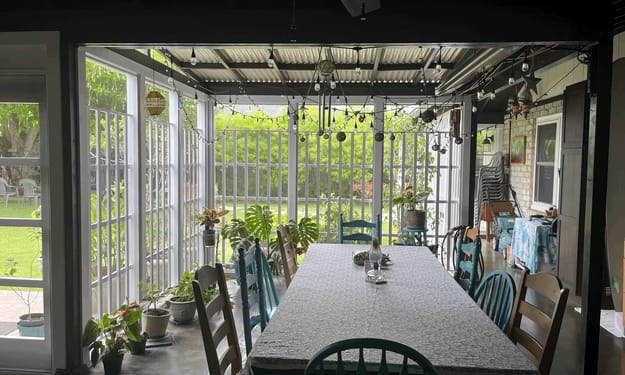The Moon's Clan
My gentle light, my gentle people

Banaba 1931
Stretching, I slowly rise in the eastern sky, throwing a veil of soft amber illumination over the vast expanse of the Pacific Ocean, as I have done since the beginning of time.
I smile as I see a small tropical island, a total area of 6 sq km (2.34 square miles) and only 83 km (52 miles) south of the Equator. It lies in the full rush of the equatorial currents. Under my moonlit canopy, the island’s tall coconut palm trees sway ever so lightly as a slight sea breeze drifts across the vast expanse of water. The fronds of the trees glisten under the glow of my radiance across the night sky.
Along the fringing reefs at the water’s edge, the whitecaps of the waves emit a phosphorescent glow, reflecting my gentle light. This small isle is a perfectly rounded mass gently rising like a giant sea sponge from the vast and dark depths of the ocean below, reaching over two hundred and fifty feet above sea level. At the island’s highest point there’s a lush plateau, thickly covered in coconut palms and the dark green Calophyllum trees that are part of the main vegetation. Dappled in my filtered glow, the native Banaban village of Buakonikai nestles in under the dense canopy.
Buakonikai is situated at the most beautiful spot on the island, and its inhabitants take great pride in their village. The main maneaba or meeting house stands proudly in the middle of the surrounding mwenga’s (traditional houses), with palm-strewn roofs pitched sharply on two sides, hanging down to only five feet above the ground. This eliminates the need for walls and assists the runoff from the tropical rains that lash the island. It also permits the flow of the cool sea breezes from the ocean below. The edge of the thatched roof is trimmed in a perfectly straight line on all sides; a tradition proudly carried out by the same family clan over the generations – a strong sense of honour and duty.
As my reflective glow filters through the thick canopy of the trees, the village’s inhabitants sleep. Some dream of tomorrow’s catch or their loved ones; others toss on their pandanus sleeping mats. These are restless ones, their dreams focused on what the future will hold for their homeland.
Under the village, the bangabangas (water caves) snake their way deep underground. The labyrinth of tunnels weaves their way like tentacles reaching out to the shoreline and the ocean far below. The spirits in the caves are also restless, screeching and roaring to show their displeasure as the miner’s shovels draw closer.
Down below the plateau, the native village of Uma sits on Sydney Point at the most southern point of the island. Neat rows of thatched houses sit atop the coral terraces, stepping down the side of the incline toward a stretch of brilliantly lit white beach. Just behind the village, the main pathway meanders its way through the ever-present coconut palms. When strolling the length of the walkway during the daylight hours, the village offers a kaleidoscope of Banaban culture as the Island’s inhabitants go through their daily routine.
But tonight, all is quiet, except for the sound of the waves echoing off the coral and limestone rocks at the water’s edge. The ocean’s spray carries the ever-prevailing smell of the sea. Next to the western side of the village and along the upper pathway is a European settlement; here, the buildings stand in stark contrast to the natural vista and contours of the island and the traditional villages. The structures lift high into the air at right angles to the ground below. Masses of steel and shiny silver corrugated iron glisten under my ever-watchful presence. The surrounding natural vegetation has been removed or altered to make way for these new structures, huge machinery and mining plant capable of crushing and drying tons of the island’s precious prize – phosphate.
As I rise higher, I move towards the village of Tabiang, situated on the western side of Home Bay, just above Lillian Point. Above the steep limestone cliffs, a large compound houses hundreds of Chinese artisans and labourers. Here the male-only population is quiet, deep in the sleep that comes so quickly to its hard-working occupants.
Just below the Chinese quarters is the London Missionary Society Mission; here, a Protestant God ministers to the island’s converted “pagans” and some of the imported labour contingent. Closer to the village, the “native” quarters house an even larger population of mostly Gilbertese workers and their families.
As I reach my zenith, my intense rays light up the northern side of the island where the main native Banaban village of Tabwewa is located. The grass huts nestle in amongst the limestone embankments and terraces above the shoreline. Further along, a timber jetty juts out into the ocean with a smaller European settlement nearby. Run by the French Catholic order, the Sacred Heart Mission is further back from the shore; here a Catholic God administers to the mainly Gilbertese converts and a handful of European staff.
As the pathway winds back up past the Mission and the northern mining area, the walkway leads all the way back to the northern side of the central plateau on the crest of the island. Complete with tall steel overhead cableways, this is the central mining area, or “topside” as the European workers refer to the place. My moonbeams shine down on this, the eeriest part of the island.
Large tall pinnacles of fossilised limestone twist and contort in strange shapes towards my night sky. There is no jungle canopy; it has long ago been cut back and cleared before removing over sixty feet of the surface soil. Only these peculiar monoliths remain in this ominous place. Instead of softening the grotesque forms, my reflective rays accentuate the exposed pillars stripped bare of their prized possession. These silent sentinels are all that remains of a once-beautiful place. A place that has taken millions of years to create and less than thirty years to destroy.
I slowly make my way towards the western horizon and allow the pre-dawn half-light to spread over Ocean Island. Just a fleeting moment in a millennium of time in this unique place, the homeland of the Banaban people. Their fragile culture and their beautiful island pillaged over a moment in time. But I hope for their future.
Until we meet again, stay safe my friends; trust in your future. I will be watching over you, until your beautiful Island is restored to you and forever thereafter.
Get the Book!
Read more about the epic story of Banaba (Ocean Island) and the Banaban people.
“Stacey King has created a fascinating story about her great-grandparents and their life on Banaba Island in the early 1900s. The sad saga of the rape of the island and the usurpation of the rights of the Banabans by Australian and British phosphate miners is told through the eyes of the Williams family”
Nakaa's Awakening, Land of Matang – Book One, by Stacey M King is available on Amazon here.
About the Creator
Stacey King
Stacey King, a published Australian author and historian. Her writing focuses on her mission to build global awareness of the plight of the indigenous Banaban people and her achievements as a businesswoman, entrepreneur and philanthropist.
Enjoyed the story? Support the Creator.
Subscribe for free to receive all their stories in your feed. You could also pledge your support or give them a one-off tip, letting them know you appreciate their work.






Comments
There are no comments for this story
Be the first to respond and start the conversation.